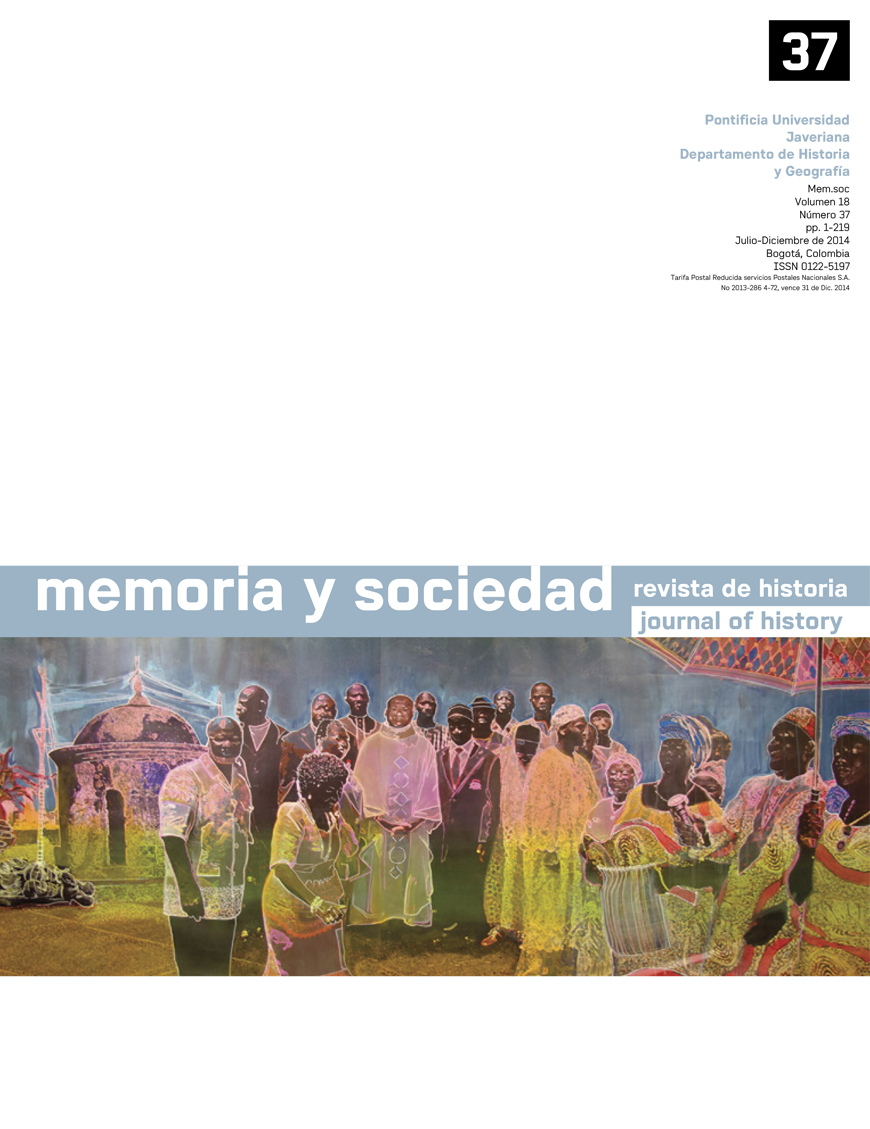Abstract
The establishment of the "mita" for silver exploitation in the Mariquita Mines in the New Kingdom of Granada produced the incorporation of Indians as workforce for its benefit. The mitayos were recruited through the socalled "conductions" from their settlement areas in the provinces of Tunja and Santa Fe, and then they were taken to the silver mining areas. Facing the recognition of natives as vassals of the king, the authorities of the Royal Court had to establish a "salary" in order to recognize the work in the mines. The complexity of these circumstances for the survival of the indigenous workers and the operation of the exploitation mechanisms are the coordinates that will be analyzed herein.The journal Memoria y Sociedad is registered under a Creative Commons Attribution 4.0 International Public License. Thus, this work may be reproduced, distributed, and publicly shared in digital format, as long as the names of the authors and Pontificia Universidad Javeriana are acknowledged. Others are allowed to quote, adapt, transform, auto-archive, republish, and create based on this material, for any purpose (even commercial ones), provided the authorship is duly acknowledged, a link to the original work is provided, and it is specified if changes have been made. Pontificia Universidad Javeriana does not hold the rights of published works and the authors are solely responsible for the contents of their works; they keep the moral, intellectual, privacy, and publicity rights.
Approving the intervention of the work (review, copy-editing, translation, layout) and the following outreach, are granted through an use license and not through an assignment of rights. This means the journal and Pontificia Universidad Javeriana cannot be held responsible for any ethical malpractice by the authors. As a consequence of the protection granted by the use license, the journal is not required to publish recantations or modify information already published, unless the errata stems from the editorial management process. Publishing contents in this journal does not generate royalties for contributors.

